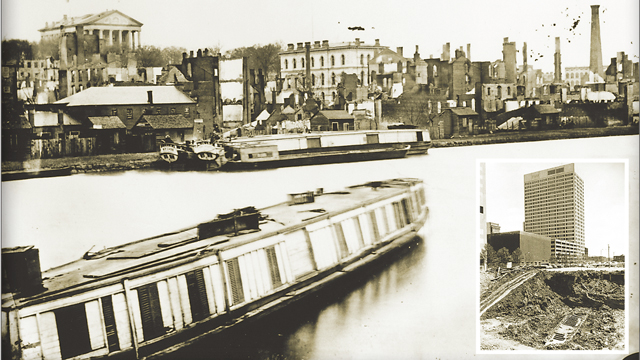For nearly three centuries, the James River has been vital to Richmond’s economic growth. From hydropower to shipping to beer production to recreation and tourism, the river’s waters are the foundation of our modern city.
This foundation was revealed quite literally in 1983, when construction began on the James Center, what was then the largest commercial development in Richmond’s history. The $325 million office park project – encompassing five city blocks – soon hit a bump when digging unearthed eighteenth century boats once used on the James River and Kanawha Canal.
As part of the first canal system in the United States, the Richmond section opened in 1794 to allow shipping around the falls. But how did these canal boats become buried twenty feet below a downtown parking lot? A hundred years ago, those blocks were underwater and part of the Great Basin, which spanned the area between 8th and 11th Streets, from Cary to Canal Streets. Largely dug by the labor of enslaved people and filled with James River water, the Great Basin acted as a harbor, where canal boats could turn around and load various cargo of the day from the surrounding warehouses, such as tobacco, produce, and flour.
Arriving boats unloaded international goods like perfume, coffee, guano (a manure-like fertilizer), and spices from downstream, and essentials such as coal from the western part of the state, from upstream. The rise of the railroad industry meant the canal closed to navigation in 1881 and the basin was refilled with earth. With the discovery of the boats during the 1983 dig, construction halted temporarily to allow for excavation and study. When construction finished in 1987, Richmond had the James Center’s three new office towers.

Photo: V.52.01.40 The Great Basin, 1865, The Valentine, inset, V83.105.04 TheValentine




